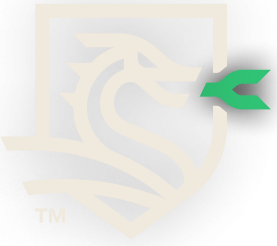Products
Hoover
ExteriorFireX™

Put ExteriorFireX to work in your next project.
Code
Compliance
ExteriorFireX should not be confused with surface coatings, because test requirements and code definitions are entirely different for each.
ExteriorFireX is pressure impregnated and carries a flame spread rating derived by UL Solutions in the 30 minute ASTM E-84 (UL 723) flame spread test, while coatings are sprayed, brushed or rolled on the surface and tested for only 10 minutes. Coated wood does not meet code requirements for structural uses.
IBC 2304.12.1 Locations requiring waterborne preservatives or naturally durable wood. Wood used above ground in the locations specified in Sections 2304.12.1.1 through 2304.12.1.5, 2304.12.3 and 2304.12.5 shall be naturally durable wood or preservative-treated wood using waterborne preservatives, in accordance with AWPA U1 for above-ground use.
Design & Construction Guide
Safer by design. Sustainable by nature.
This is your guide to designing and building with Hoover’s code compliant, pressure impregnated, kiln dried, fire-retardant-treated lumber and plywood products.
Advantages
-Permits use of wood under restrictive codes
-Thoroughly strength tested
-Can be used outdoors or indoors
-Reduces insurance rates
-Non-corrosive
-Each piece identified with UL classification mark
-Kiln drying monitored by Timber Products Inspection Inc.
-No halogens or sulfates
-Optional blue color coded
-Can be painted or stained
-Approved for use in nuclear power plants
TECH NOTES
ExteriorFireX Specs
A detailed rundown of everything related to our top of the line fire-retardant-treated lumber and plywood for enclosed structural applications.
Uses
-Exterior Decks
-Balconies
-Stairways
-Siding
-Scaffolding
-Moulding
-Trim
-Open-air roof systems
-Stables
-Soffit
-Fascia
-Roof sheathing
ExteriorFireX fire-retardant-treated lumber and plywood offers the workability and versatility of wood as well as the fire-safety and insurance advantages of noncombustible materials.
Balconies and exterior walls constructed of ExteriorFireX may be considered noncombustible by some building codes.
ExteriorFireX fire-retardant-treated wood siding is often used in lieu for noncombustible siding, and exterior stairs constructed of ExteriorFireX are generally accepted as noncombustible.
ExteriorFireX fire-retardant-treated roof systems including roof supports, trusses, and decking may often be used in lieu of noncombustible construction in open warehouses, storage sheds, and structures with no penalty in the insurance rates or the building code classification of the structure.
ExteriorFireX lumber and scaffold plank for temporary structures in construction projects may help reduce the cost of builders’ risk insurance.
The Specifier should evaluate the acceptability of the product for each application.
Exposed (non-contact) surfaces of ExteriorFireX™ joists, framing, and decking should be coated on all sides with a paintable water-repellent preservative before or during installation. Water repellent preservative coatings should be re-applied regularly per the manufacturer’s recommendation.
FRTW Education
Tap into continuing education from the industry leader.
Quick, convenient courses, certified by the American Institute of Architects (AIA) for HSW/AXP credit and delivered by International Code Council (ICC) Preferred Education Providers.
Code Acceptability
Each piece of ExteriorFireX fire-retardant-treated lumber and plywood bears the UL Solutions label as required by building codes.
ExteriorFireX fire-retardant-treated lumber and plywood meets or exceeds the requirements of the following agencies:
-Military Specification MIL-L-19140E
-International Code Conference (ICC)
-Wildland Urban Interface (WUI)
-Insurance Service Office (ISO)
-American Nuclear Insurers
-Nuclear Mutual Limited
Finishing
Wood Siding
ExteriorFireX fire-retardant-treated wood siding combines the economy and natural beauty of wood siding with the insurance and safety advantages of fire-retardant-treated wood siding.
It is used to meet restrictive fire performance criteria and/or reduce insurance rates.
ExteriorFireX fire-retardant-treated wood siding is often accepted as an alternative for noncombustible siding.
It is available in 303 Grade plywood sidings and various lap siding patterns in cedar, pine, and fir.
